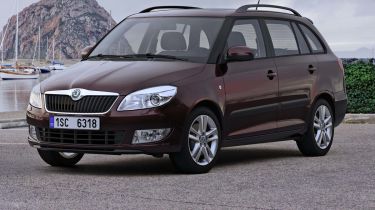Skoda Fabia Estate (2007-2014) review
With ample space, style and equipment, Skoda Fabia Estate impresses

Driving
The Fabia hatch has composed road manners, which is something that carries over to the estate model. The cosseting ride does a good job of cushioning city centre bumps, but the soft suspension settings result in body roll through the corners, while the nose can dive under heavy braking. The smaller three-cylinder petrol engine struggles with the weight of the Fabia, but the 1.4-litre is stronger and the 1.6-litre is punchier still. We prefer the torquey diesels, though – even if both 1.4-litre and 1.9-litre units can be intrusive if worked hard.
Marketplace
Apparently, you can have your cake and eat it! Skoda promises the Fabia estate has the versatility of a family car at a supermini price. It’s a formula that worked for the previous generation model, which sold over 30,000 examples in six years. With more luggage capacity, plus better quality and more equipment, the latest version should be even more successful. But it is now facing tougher competition from the stylish Peugeot 207 SW and Renault Clio Tourer. Fortunately, the designers have done a good job of turning hatch into estate. It’s been stretched by just 7mm, but it seems far longer and sleeker than the hatchback. A steeply raked tailgate, extra side windows and aluminium roof rails all help create this impression. Trim levels mirror the hatch in with 1, 2 and 3, being available, although there is no Sport model yet.
Owning
Open the large tailgate, fold the rear seats flat and you’ll find 1,460 litres of space. Deep cubbies, a roller blind-style luggage net and a 60:40 split rear bench boost versatility further. Thanks to a 46mm increase in height, there’s also much more headroom in the rear. Elsewhere, the cabin is shared with the hatch, which means it not only looks upmarket, but feels expensive, too. Entry-level models represent good value with prices starting at under £10,000, but the flagship models stray dangerously close to Ford Focus territory. The Fabia should be cheap to run, with good fuel economy and competitive retained values.







